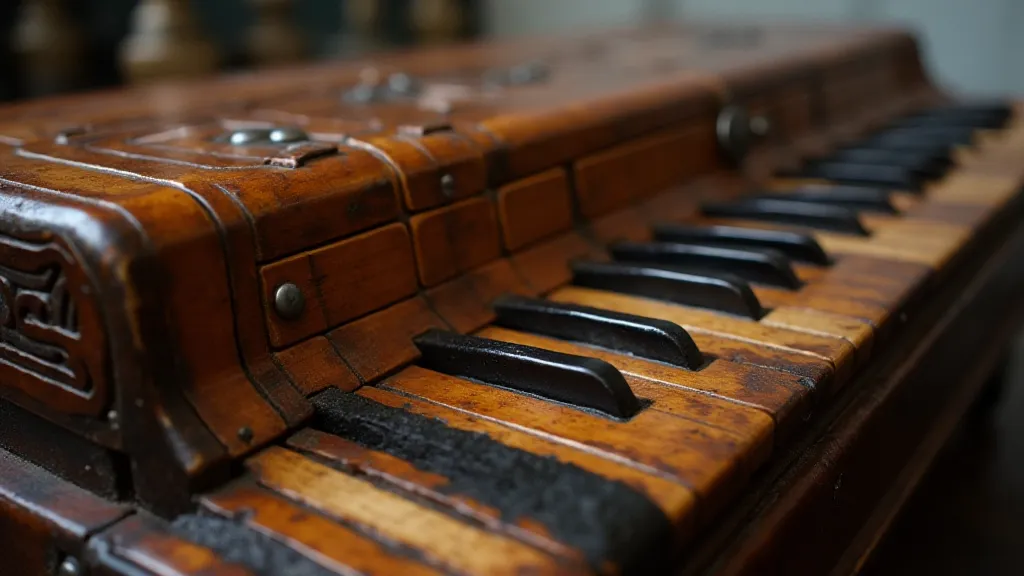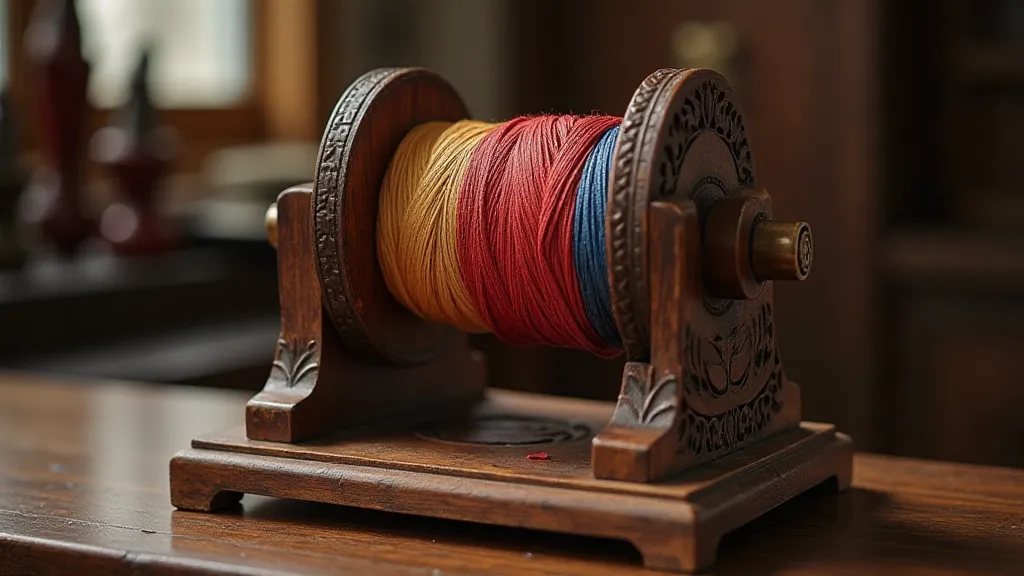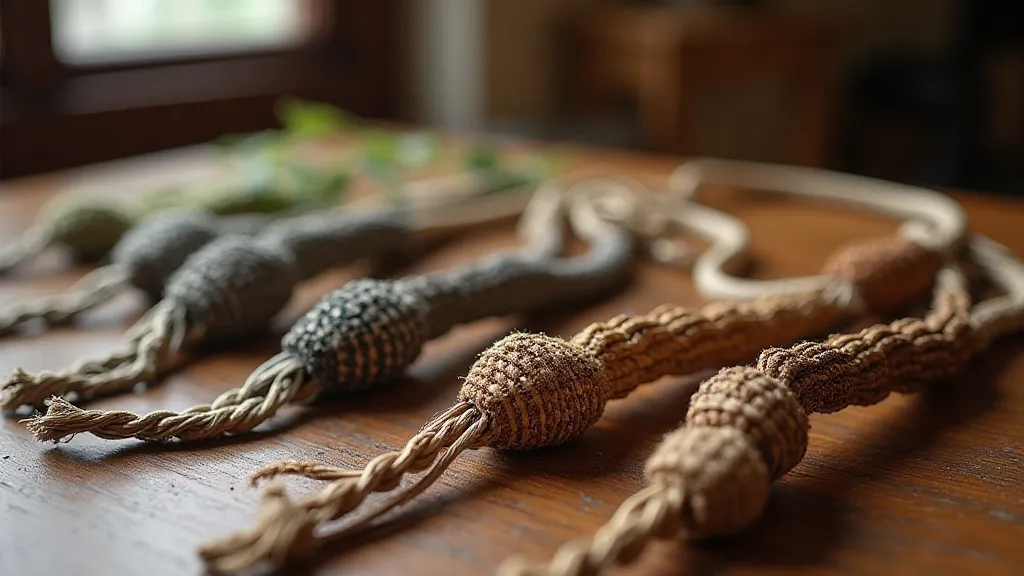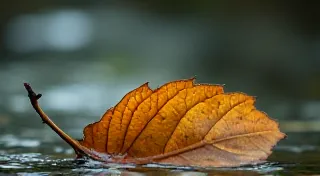The Cord's Cartography: Mapping the Geographic Spread of Kumihimo
The scent of aged wood, the subtle give of well-worn leather – these are the sensory anchors that connect me to the past. I've spent years restoring antique accordions, instruments that whisper tales of travelling musicians and bustling ballrooms. Each repair, each painstaking cleaning, unveils layers of history. And it’s in that same spirit of patient discovery that I’m drawn to Kumihimo braiding. It's more than just a craft; it's a tangible link to generations past, a woven narrative of cultural exchange, and a testament to the enduring human desire for beauty and function.
Kumihimo, translating roughly to "gathered threads," is a Japanese braiding technique with a history as intricate and beautiful as the cords it produces. Its story isn't a simple, linear progression, but a sprawling map of influences and regional adaptations, a cartography of the cord itself. While its precise origins remain shrouded in some mystery, the prevailing view suggests Kumihimo arrived in Japan around the 6th-7th centuries, likely introduced from the Korean peninsula or even China, alongside Buddhism and other cultural elements.
Initially, the primary function of these braided cords was utilitarian. They served as belts, reins, sword hilts, and bindings for scrolls and books—vital components in a society where every object was imbued with purpose. The earliest known examples, dating back to the Nara period (710–794), were relatively simple, often using just a few strands of silk, dyed with natural pigments derived from plants and insects. Think deep indigo from the indigofera plant, or vibrant reds and yellows from madder and safflower roots. These early cords weren’t simply functional; they demonstrated an early understanding of color theory and aesthetic harmony.

The Roots of Kumihimo: More Than Just Braiding
Understanding the complexity of Kumihimo necessitates appreciating its interconnectedness with other art forms and cultural practices of the time. The skill in dyeing fabrics, for example, directly influenced the color palettes and design possibilities within Kumihimo. Similarly, the design philosophies behind traditional Japanese textiles, like Nishijin-ori, would significantly impact the later decorative styles we see in Kumihimo. The development of the techniques wasn's simply an isolated craft. The skills involved often intersected with the lives of artisans dedicated to other art forms.
The Rise of Specialized Techniques and Regional Flourishing
As Kumihimo evolved, so did the complexity of the braiding techniques. The Heian period (794–1185) saw the emergence of specialized workshops, often associated with temples and aristocratic households. These workshops developed increasingly sophisticated braiding patterns, including the *karakake* and *hatagake* methods, which allowed for the creation of elaborate designs. The cords moved beyond simple functionality, becoming decorative elements, showcasing the weaver's skill and the patron’s status. Imagine a court official’s robes adorned with cords featuring repeating motifs, symbolizing prosperity and good fortune. The intricate designs and the precision required to create them hinted at a deeper system and order, almost as if the act of braiding itself contained a hidden language.
The Kamakura period (1185–1333) witnessed a shift towards more practical applications, particularly in the burgeoning samurai class. Strong, durable cords were essential for weapon hilts and armor, demanding a higher level of structural integrity. Braiding patterns often incorporated interlocking designs and reinforced strands to achieve maximum strength and resilience. These cords weren't merely beautiful; they were tools of life and death. The level of sophistication required to produce these functional yet elegant cords clearly demonstrate the societal value placed upon craftsmanship at the time. The very structure of the braid embodied the principles of strength and resilience, reflecting the values of the warrior class.
Regional variations began to become more pronounced. Kyoto, as the imperial capital, remained a hub of innovation, renowned for its delicate and refined braids. However, other areas developed their own distinctive styles. In the mountainous regions of northern Japan, for instance, the use of hemp and other local fibers became more prevalent, resulting in braids with a more rustic and textured appearance. The coastal areas, influenced by trade with China and Korea, incorporated new color palettes and braiding techniques. The visual impact of these regional variations highlighted the diversity of Japanese culture and the adaptation of techniques to suit local resources and aesthetic preferences. Exploring these stylistic differences offers a fascinating glimpse into the social and economic landscape of different regions.
The Edo Period: Standardization and Ornamentation
The Edo period (1603–1868) brought a period of relative peace and prosperity, allowing for further refinement of Kumihimo techniques and a heightened appreciation for decorative arts. The standardization of braiding patterns increased, alongside more complex designs intended to emulate traditional textiles like brocade and Nishijin-ori. It was during this time that the *marudai* stand, the iconic wooden frame we associate with Kumihimo today, began to be widely adopted, allowing for easier and more consistent braiding. The standardization process itself was a reflection of the changing social and economic conditions, as demand for Kumihimo grew beyond the elite classes.
The rise of the merchant class fueled demand for Kumihimo for a wider range of applications, from clothing and accessories to household goods. Elaborate braids adorned kimono sashes, bags, and even dolls, reflecting the increasing consumerism of the era. The use of gold and silver threads, often woven with silk, further elevated the status of Kumihimo, turning it into a luxurious craft. The impact of this economic shift is evident in the sheer variety of applications for Kumihimo, which went far beyond its original utilitarian function.

Beyond the Weave: The Storytelling Aspects of Kumihimo
It's easy to appreciate Kumihimo solely for its aesthetic appeal, but to truly understand it, we must consider its narrative dimension. The patterns woven into these cords were often laden with symbolic meaning, acting as a form of visual communication. Repeating motifs could represent family crests, auspicious symbols, or even stories passed down through generations. Understanding these symbolic layers adds a richness and depth to the appreciation of Kumihimo. Indeed, it’s fascinating to consider how seemingly simple braids could convey complex narratives. The skill wasn't just in the technical execution but also in the creative interpretation and storytelling aspects.
Kumihimo Beyond Japan: A Global Tapestry
While Kumihimo remains deeply rooted in Japanese culture, its influence has extended far beyond its origins. With the increased globalization of the late 19th and 20th centuries, Kumihimo techniques have been adopted and adapted by crafters around the world. While it’s challenging to replicate the nuances and subtleties of traditional Japanese Kumihimo without a deep understanding of its cultural context, the basic principles can be applied to create beautiful and unique cords in a variety of styles. The very act of adapting and reinterpreting these techniques reflects the universal human desire to create and connect across cultures. Interestingly, examining how different cultures have embraced and modified Kumihimo techniques reveals a great deal about their own aesthetic values and cultural traditions. For those interested in exploring this topic further, a detailed look into the cord as narrative can reveal fascinating insights.
I'm reminded of my grandfather, a keen amateur craftsman, who tried to adapt Kumihimo principles to create belts for his leatherworking projects. He never quite mastered the authentic Japanese technique, but his attempts, though imperfect, were full of ingenuity and a genuine appreciation for the craft's elegance. He would speak of the patience required, the rhythm of the hands, the quiet satisfaction of creation – values that resonated across cultures and time periods. The mathematical precision inherent in Kumihimo is equally fascinating. For a deeper understanding of these principles, you might consider looking into the hidden mathematics of Kumihimo.
Preserving the Legacy: A Weaver's Responsibility
As we engage in Kumihimo today, whether as hobbyists or professional artisans, we inherit a rich legacy. The preservation of traditional techniques, the understanding of regional variations, and the appreciation of the cultural context are all vital components of this inheritance. Each braid we create is a small act of remembrance, a thread connecting us to the generations who came before. It’s a quiet rebellion against the disposability of modern life, a reaffirmation of the enduring power of handcrafted beauty. Learning to decipher the symbolic language embedded within traditional Kumihimo patterns offers a deeper understanding of the craft and the culture it represents. To fully appreciate the history and artistry of Kumihimo, one could also consider studying the language of twists.
Collecting antique Kumihimo cords can be a fascinating pursuit, offering a tangible connection to the past. Look for cords with distinctive regional patterns, unusual color combinations, or evidence of age and wear. Restoring damaged cords requires a delicate touch and a deep understanding of the materials and techniques involved. But the reward – bringing a piece of history back to life – is immeasurable. The subtle variations in color and texture found in antique cords can reveal surprising insights into the materials and techniques used by past artisans.

The cord’s cartography, then, isn't just about mapping geographical spread; it's about tracing the flow of ideas, the transmission of skills, and the enduring human desire to create something beautiful and meaningful. It's a reminder that even the simplest of crafts can hold a universe of history, culture, and artistry.





